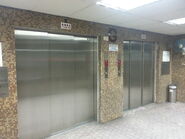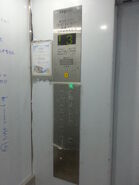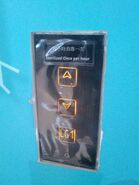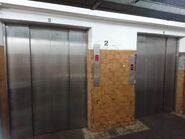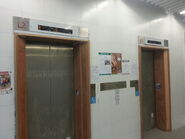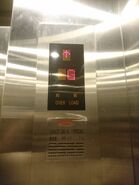This is a list of Fujitec elevator fixtures.
1960s
Black buttons
Many 1960s Fujitec elevators used non-illuminating black buttons and analogue floor indicators. The interior floor indicators are integrated into the car station, which consisted of multiple small illuminating lamps or numbers and two triangle shaped directional arrows. The landing floor indicators are also integrated with the hall station. As Fujitec were still operating under its old name Fuji Transport Industry Co., Ltd. until 1974, elevators installed during this era were branded as FUJI.
1970s to 1980s
1970s to early 1980s fixtures
Round buttons
From the early 1970s until the early 1980s, Fujitec used round plastic buttons which illuminates entirely when pressed. These buttons always have black leterring on them. There were also non-illuminating black buttons, with white leterring on them, as well as a dome/convex version which were only seen in old Fujitec elevators installed in HDB public housing blocks in Singapore. For the door control buttons, the door open button is black and marked as DO, while the door close button is white and marked as DC.
As Fujitec was operating under its former name "Fuji Transport Industry Co., Ltd." until 1974, elevators installed before 1974 were branded as FUJI, featuring the old "bell" looking logo. New installations from 1974 onward began to use the "Fujitec" name. However, those installed in Singapore did not use the new name until at least 1977.
Touch sensitive buttons
Fujitec began using touch sensitive buttons in the late 1970s, and were used throughout the 1990s. The earliest type was a round metallic button enclosed on a square illuminating glass halo. These buttons were also used by Elevadores Sûr in Brazil as part of a technical partnership between the two companies, and later became the base for the ThyssenKrupp Top Line capacitive buttons. In the 1980s, Fujitec updated these buttons with a round illuminating halo, similar to that of Hitachi in the same era.
Vandal resistant fixtures
Fujitec also made vandal resistant buttons with a small light bulb. These fixtures are extremely rare.
Floor indicators
Fujitec mostly used analogue display floor indicators, featuring illuminating circles and arrow shaped directional arrows. These floor indicators can be above the door, on the landing hall station or even on the car station (usually seen in freight elevators). Some intermediate floor hall stations may only have illuminating directional arrows instead of a complete set of illuminating circles. Fujitec also made two other versions of these indicators; one is a version with illuminating squares (usually found in high-rise installations) and another one is a "candlelight" style indicators with floor numbers cut into the metallic indicator with its exact shape on the exterior.
Late 1970s to late 1990s fixtures
GAL-like fixtures
These fixtures were released in 1981 along with the launching of Fujitec's "Royal Superdyne Imperial" elevators in Japan[2] . The buttons are white plastic which light up entirely when pressed, and enclosed in a black square halo, similar to Epco's WR and GAL's Jet Plus buttons in the United States. The floor indicators are analogue display with yellow/orange illuminating numbers on a long black display; going horizontal on the inside and vertical (integrated with the landing stations) on the outside. Some later models used illuminating squares or even a digital display with digit numbers.
Octagonal buttons
These buttons were commonly found in older Fujitec elevators from the mid until late 1980s. They can be push or touch sensitive. The push buttons lights up entirely in amber. The touch sensitive buttons are square stainless steel plate with an illuminating halo.
Round touch sensitive buttons
Fujitec updated their touch sensitive buttons in the 1980s. The illuminating halo has been changed from square to round, similar to that of Hitachi in the same era.
Floor indicators and hall lanterns
Fujitec mainly used analogue floor indicators with illuminating squares. A lot of late models began to use 16-segments digital displays[3] where the number would fade when changing between floors.
Fixtures used in HDB blocks, Singapore
Fujitec elevators installed in HDB blocks in Singapore between the early 1980s and mid 1990s had their own fixtures, which were probably developed by Fujitec Singapore at their Bedok plant. These fixtures consist of round buttons and digital floor indicators. There are two versions of buttons; one is a white plastic buttons that are flatter and less concave, and the second one is a protruding metal button with engraved character. All of these buttons have a red dot lamp under the character. In the mid-1990s, when most of these elevators underwent aesthetic refurbishment, the plastic buttons were replaced with the metallic version, which was a standard fixture for Fujitec HDB elevators at that time. However, some of these buttons would later be replaced with Dewhurst US90-15 buttons in the 2010s, as the old ones did not have braille marks.
Third party/generic fixtures
Some 1980s Fujitec elevators in Hong Kong used Dewhurst fixtures, with mostly the US81 buttons being used.
1990s
Round buttons
These are round buttons with black halo that resembles Westinghouse's AE and Montgomery A-Series buttons. These buttons were also used in American Fujitec elevators in the 1990s.
Square stainless steel buttons
These are square buttons with either red or amber illuminating halo and black frame.
Grey square buttons
These are grey square buttons with orange illuminating symbol or number. There is also another version that comes with illuminating sides.
Octagonal buttons
Fujitec continued to make the glass octagonal push buttons throughout the 1990s. Fujitec also made a metallic version of these buttons which could be small or slightly bigger, and has illuminating halo.
Round stainless steel buttons
These are round stainless steel buttons with an illuminating halo and engraved character.
Touch sensitive buttons
Fujitec continued to use round touch sensitive buttons until at around the mid 2000s.
Floor indicators and hall lanterns
From the early 1990s, most Fujitec elevators used red LED dot-matrix display with scrolling arrows. Hall lanterns are triangle blocks and lights up in green for up and red for down. Some earlier models used digital floor indicators with segmented numbers.
Fixtures used in Fujitec Computer Control elevators
These fixtures were used in Fujitec Computer Control elevators from 1984 until around the mid 1990s. They have black square buttons with a small square orange lamp and LED indicators. The door control and alarm buttons are wider than the rest of the buttons. These fixtures had two types of floor indicators; the first one is an analogue display on the landing station, and the second one is a LED dot matrix display featuring scrolling directional arrows. These fixtures are found in Japan and other Asian countries.
American fixtures
These fixtures are used in Fujitec elevators in the United States.
Fixtures used in HDB blocks, Singapore (1990s)
By the 1990s, Fujitec elevators installed in HDB blocks in Singapore were still fitted with the same round metallic buttons Fujitec previously used in the 1980s. Beginning in the mid or late 1990s, Fujitec started using Dewhurst fixtures, which consist of US90-15 button and ULS47H LED floor indicators. There were also elevators installed with the older metallic buttons, but with Dewhurst ULS47H indicators.
2000s to current
These are the fixtures used in Fujitec elevators mainly in Southeast Asia, East Asia and Europe in the 2000s.
Black square buttons
These buttons are black square plastic with orange illuminating lamp on the center.
Round buttons
Touch sensitive buttons
LED floor indicators
Fixtures used in Southeast Asia and other countries
These are the current fixtures used in Fujitec elevators in Asia. They are used in the GLVF series (GLVF-D, -E, -H, -II), MLGS-II, ZEXIA, REXIA, Talon and few other elevator models.
CP-A1 buttons
These are white round resin buttons with orange illuminating halo. On some elevators, the button for main floor (if present) is marked green. These buttons are used in Fujitec GLVF-II, GLVF-H, MLGS-II as well as some early ZEXIA elevators.
CP-A2/C2 buttons
These are black round resin buttons with orange illuminating halo. Like CP-A1, a button for main floor (if present) is marked green. These buttons are currently used in Fujitec ZEXIA, GLVF-II, GLVF-H and MLGS-II elevators.
CP-B1 buttons
This is a round stainless steel buttons with braille and tactile. Number is illuminated in orange when pressed.
CP-B2 buttons
This is a round stainless steel buttons with tactile that lights up when the button is pressed.
CP-C1 buttons
This is a white round button made of resin with orange illuminating halo. The door open button is green and wider than the rest of the buttons to avoid confusion with the door close button. CP-C1 buttons are currently used in Fujitec ZEXIA mini machine room traction elevators[4] and REXIA machine room less elevators[5].
CP-D1 buttons
This is a round button made of stainless steel with orange illuminating halo. The door open button is enlarged to avoid confusion with the door close button. Like CP-C1 (see above), CP-D1 buttons are currently used for Fujitec ZEXIA elevators[4]
CP-D3 buttons
Similar to CP-D3, the door open button is slightly enlarged compared to all other buttons.
RP-A1 buttons
RP-A1 is a rounded rectangular button made of resin. It has an orange illuminating halo and a black square on the center with orange illuminating number. This button is only used for Fujitec GLVF-H and MLGS-II elevators.
BR38-A/BR38-B buttons
This is a round silver button with a silver rim/frame and both illuminating halo and number. BR38-A lights up blue while BR38-B lights up orange. It is only used for the Fujitec ML-GS MRL elevators.
BR38-D buttons
Similar to both BR38-A and BR38-B mentioned above, but the base of the button is black and has blue illuminating halo and number. It is only used for Fujitec ML-GS MRL elevators.
Floor indicators
Like any other Fujitec elevators, a square orange dot-matrix LED display is used as the indicators for Fujitec ZEXIA, GLVF-II, GLVF-H and MLGS-II elevators. An LCD display is also used for these models as well.
Fujitec ML-GS MRL elevators use a slightly different LED dot matrix LED displays as well as slightly different LCD displays; one which is a simple white digital segments with light blue background and another one which resembles one of Xizi Otis's TFT-LCD UI displays.
Fixtures used in Japan
These fixtures are exclusive in Japan. They were introduced in 2005 when Fujitec launched their ECEED-a elevator model in Japan[6]. These fixtures are widely used on the XIOR elevators since 2008, but some other models may also use these fixtures as well.
Standard buttons
These are round white buttons with amber illuminating tactile. The main floor and door open button are green.
Smaller square buttons
These are flat square glass buttons which light up orange or white when pressed.
Large square buttons
These are basically the bigger version of the square buttons.
Square buttons
These are square stainless steel buttons with an illuminating halo.
Floor indicators
These fixtures use blue or black LCD indicator on the inside, and orange LED dot-matrix displays for the hall stations and handicap control panels.
Fixtures used in the New XIOR elevators
These fixtures are used in the New XIOR elevators in Japan since April 2020. There are six types of buttons available:
- Black round button with tactile which replaces the previous white buttons from the older XIOR elevators.
- Round flat button which lights up entirely when pressed.
- Round stainless steel button with illuminating halo and character.
- Rectangular bar button which lights up entirely when pressed.
- Square flat button which lights up entirely when pressed.
- Square stainless steel button with illuminating halo and character.
Several updates regarding floor indicators are found in these fixtures. The LCD floor indicators have been updated with a new user interface and increased size from 5.7 inch to 8.4 inch to improve visibility. A secondary screen for showing weather forecast, live broadcasted television news or client specified contents becomes available as an option with additional cost. The wheelchair operating panel's floor indicator, which previously used LED dot matrix display, has been replaced with an LCD display. Although the majority of these fixtures now use LCD displays, the classic LED dot matrix display is still offered as an option but it is only used for landing stations.
Fujitec has also added keypad style buttons, "sensor" buttons (a preventive measurement in response to the COVID-19 pandemic) and tall LCD touch screen for the car station as an option[7].
Avian
These fixtures have round stainless steel buttons with an illuminating tactile. In Japan, these fixtures are used for the RAKUL elevators. Avian fixtures were also marketed in the United States which had been modified to meet ADA codes[8] but they have since been discontinued.
Fixtures used in American Fujitec elevators
Most Fujitec elevators in the United States have round white buttons that protrudes from the panel and lights up in yellow, similar to Otis's Vanity fixtures.
Fujitec also had two official names for their American elevator fixtures; Millenium and Avian. These fixtures might have been discontinued. Besides these fixtures, Fujitec elevators in the U.S. often uses third-party fixtures from Epco, C.J. Anderson and few others.
Fixtures used in Fujitec DFGS elevators
There are 2 known versions of fixtures used with the Fujitec Destination Reservation Guidance System (DFGS) destination dispatch system. One version (used in the United States) has a hall station with physical buttons for each floor, and a non-touch screen. The car indicator is a long dot matrix LED indicator, with segmented arrows at each end. The indicator displays the current floor on the far right, and to the left, the destinations/stops are displayed. Another version (unsure if used in the United States or not) has a touch screen destination dispatch hall station, and a screen destination indicator.
Third party/generic fixtures
Today, a lot of Fujitec elevators in Hong Kong, Singapore and United Kingdom use Dewhurst fixtures, normally the square US90-15 and round US91-15 buttons. Other fixture components such as Everbright are also used, these are often found in Hong Kong and Singapore. In Canada, Epco WN Signature Series and Epco Flushline, as well as Dewhurst fixtures are commonly used.
Dewhurst
Dewhurst fixtures used in Fujitec elevators are mostly found in Hong Kong and Singapore, mainly used in elevators installed in public housing blocks and estates. There are also a few Fujitec installations with Dewhurst fixtures in the United Kingdom. Examples of these can be found at The Peacocks (glass elevators) in Woking, Surrey[9] , and Intu Lakeside in Thurrock, Essex[10] (glass elevators).
Everbright
Some Fujitec elevators installed in Hong Kong and Singapore also use Everbright fixtures.
Other/custom fixtures
Notes and references
- ↑ 油麻地利源閣Fujitec升降機
- ↑ History of Fujitec (PDF) (Japanese) - Refer to page 49
- ↑ 上環易通商業大廈Fujitec升降機
- ↑ 4.0 4.1 Fujitec ZEXIA brochure
- ↑ Fujitec REXIA brochure
- ↑ Fujitec Annual Report 2005 (Refer to Page 17)
- ↑ Fujitec New XIOR brochure (Japanese)
- ↑ Fujitec Avian Fixtures brochure (Archived)
- ↑ Woking (where the martians landed) | IT'S LIFT TOUR TIME! - YouTube
- ↑ Tour of the lifts at Lakeside - YouTube
- ↑ 中環好利商業大廈Fujitec升降機

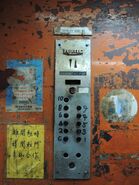

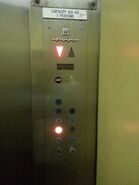
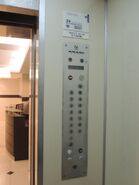
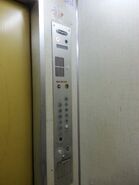



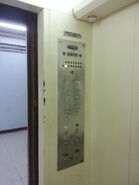


![1970s Fujitec Round Button Another.jpg (286 KB) Another 1970s Fujitec circle buttons, also can find in 1981 elevator. [1]..](https://static.wikia.nocookie.net/elevation/images/7/70/1970s_Fujitec_Round_Button_Another.jpg/revision/latest/scale-to-width-down/139?cb=20160828132912)





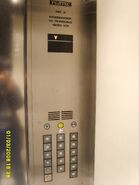
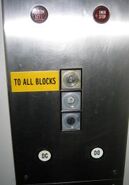
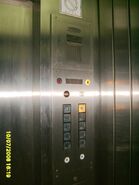
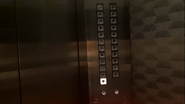

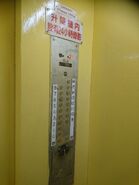




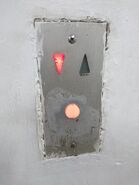
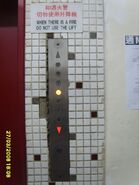

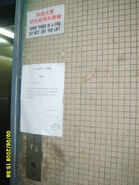
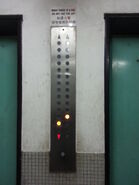
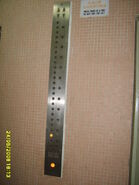

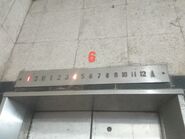


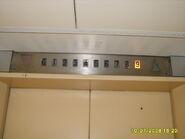

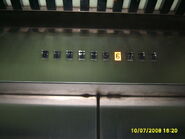

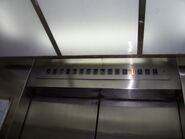


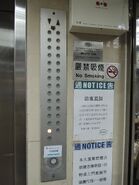



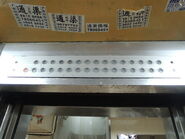

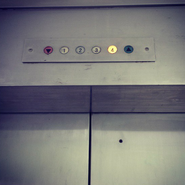


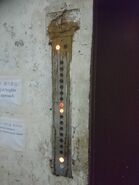
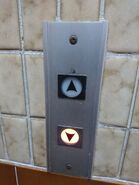



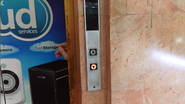

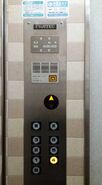


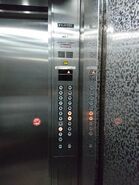


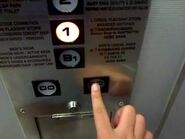
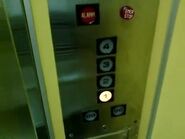




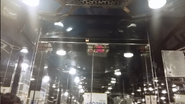
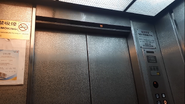




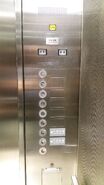



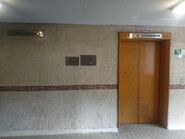

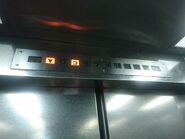
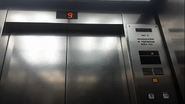

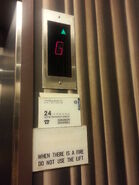

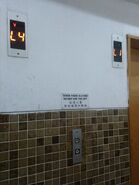


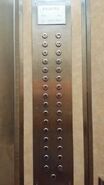


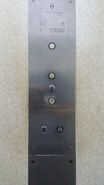
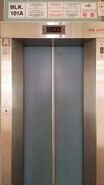


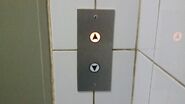





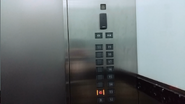



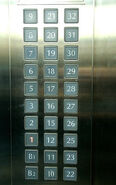
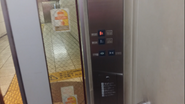


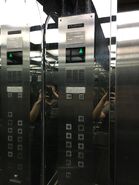

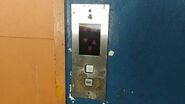

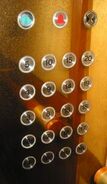


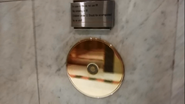
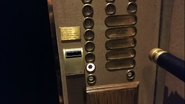



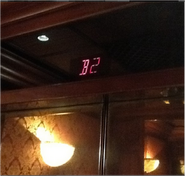

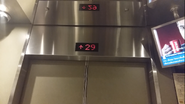

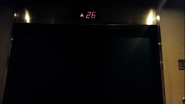


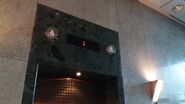

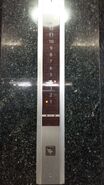


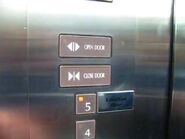
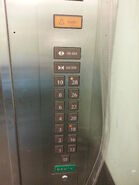


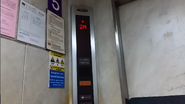

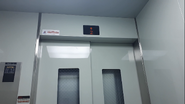

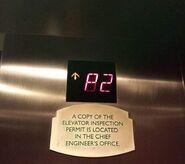

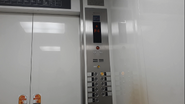
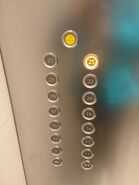
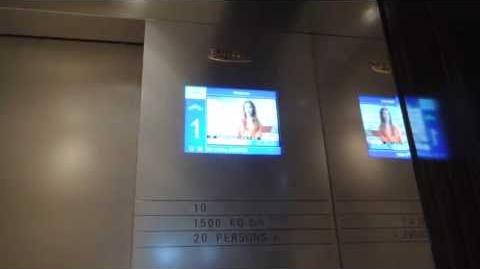
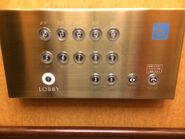

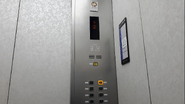

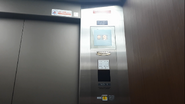
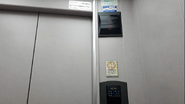
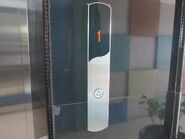



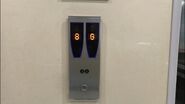
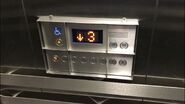
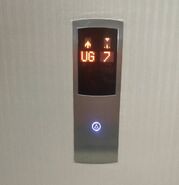

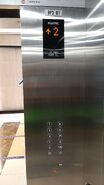

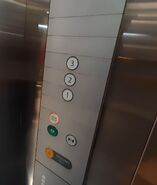

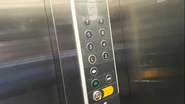
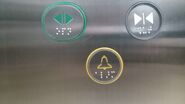

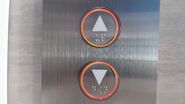


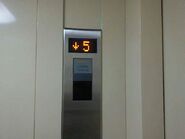

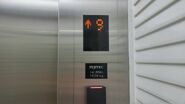



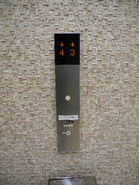


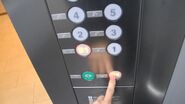

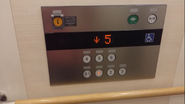








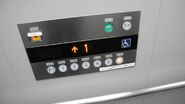
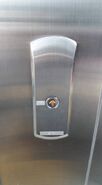
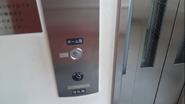
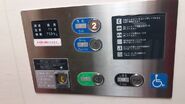


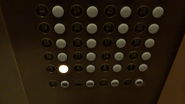
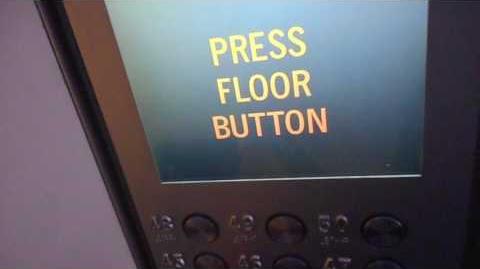
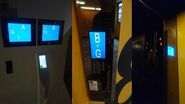
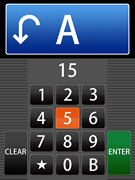
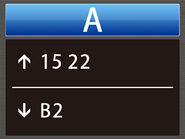


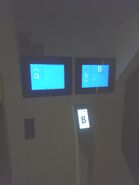
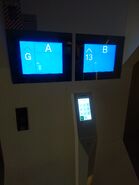
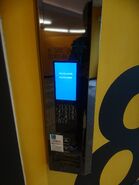
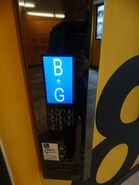
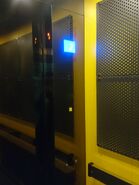

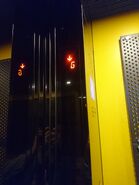
![Fujitec car UL200 indicator.jpg (1.82 MB) UL200 indicator hall floor indicator which is usually found in Hong Kong public housing block, but in fact, this indicator is used on a Fujitec elevator in private property.[11]](https://static.wikia.nocookie.net/elevation/images/7/71/Fujitec_car_UL200_indicator.jpg/revision/latest/scale-to-width-down/185?cb=20170727142703)

